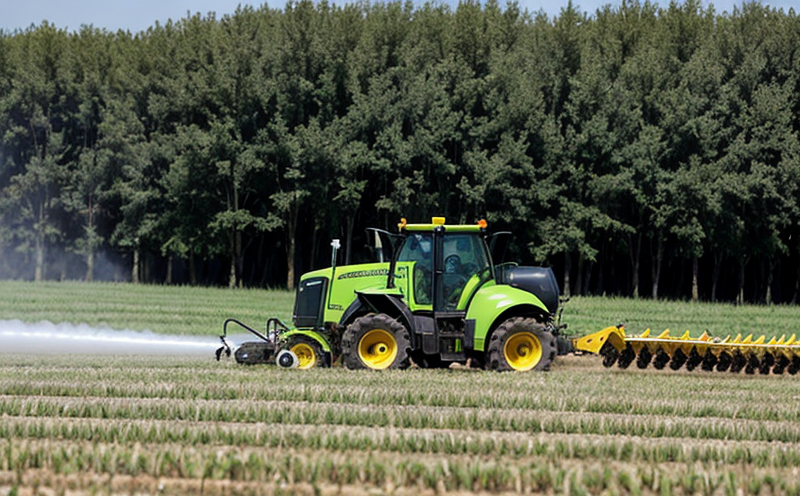Nicosulfuron Residue Testing in Crops
Understanding nicosulfuron residue levels in crops is crucial for ensuring food safety and compliance with international standards. Nicosulfuron, a broad-spectrum herbicide used primarily to control annual grasses and broadleaf weeds, can sometimes persist beyond the recommended application period or at higher concentrations than intended. The presence of residues in agricultural products may pose health risks if ingested by humans or animals.
Testing for nicosulfuron residues helps farmers, quality managers, compliance officers, and R&D engineers ensure that crops meet strict regulatory requirements set forth by organizations such as the FDA, EU Commission, and the ISO. This service is essential for maintaining market access, ensuring consumer safety, and protecting the environment.
The testing process involves several critical steps. Firstly, proper sample collection and preparation are paramount to achieving accurate results. Samples must be representative of the crop being tested and free from contamination. Secondly, the chosen analytical method should adhere strictly to international standards like ISO 17025 for proficiency in laboratory services.
The following table outlines a typical scope and methodology for nicosulfuron residue testing:
| Step | Action |
|---|---|
| Sample Collection | Gather representative samples from the field or storage facility. |
| Sample Preparation | Precisely weigh and homogenize the sample. |
| Liquid Chromatography-Tandem Mass Spectrometry (LC-MS/MS) | Analyze samples using LC-MS/MS for accurate detection of nicosulfuron residues. |
The next table provides a breakdown of the acceptance criteria:
| Criteria | Value |
|---|---|
| Nicosulfuron Residue Limit | <10 ppm (parts per million) |
| Detection Limit | <0.5 ppm |
Properly identifying and quantifying nicosulfuron residues is vital for crop safety and compliance with international standards. By adhering to rigorous testing protocols, laboratories can provide reliable and accurate results that support sound decision-making.
Scope and Methodology
- Sample Collection: Representative samples from the field or storage facility.
- Sample Preparation: Precise weighing and homogenization of the sample.
- Analytical Method: Liquid Chromatography-Tandem Mass Spectrometry (LC-MS/MS).
The testing process begins with selecting a representative sample from the field or storage facility. Samples should be free from contamination to ensure accurate results. The chosen analytical method must adhere strictly to international standards like ISO 17025 for proficiency in laboratory services.
Once collected, the samples undergo precise weighing and homogenization before being analyzed using LC-MS/MS. This advanced technique ensures high sensitivity and selectivity necessary for detecting even minute levels of nicosulfuron residues. The detection limit is set at <0.5 ppm to provide a margin of safety.
The acceptance criteria for this test are stringent, with the maximum allowable residue level being less than 10 ppm (parts per million). This ensures that crops meet strict regulatory requirements and protect consumer health and the environment. By adhering to these rigorous standards, laboratories can provide reliable and accurate results that support sound decision-making.
Why Choose This Test
Nicosulfuron residue testing is vital for ensuring food safety and compliance with international standards. Properly identifying and quantifying nicosulfuron residues helps protect consumers from potential health risks associated with excessive exposure to this herbicide. This test ensures that crops meet strict regulatory requirements, thereby maintaining market access and protecting the environment.
For quality managers, compliance officers, R&D engineers, and procurement professionals, this service offers valuable insights into the efficacy and safety of their crop treatments. By adhering to rigorous testing protocols, laboratories can provide reliable and accurate results that support sound decision-making. This, in turn, helps ensure consistent product quality and meets stringent regulatory requirements.
The test is essential for maintaining market access, ensuring consumer safety, and protecting the environment. It provides peace of mind by ensuring that crops are free from harmful residues while also meeting international standards set forth by organizations such as the FDA, EU Commission, and ISO.





